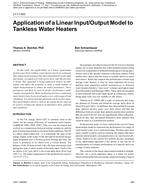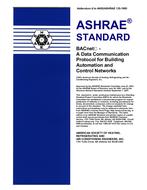Buildings account for about 40 percent of the energy consumed in the United States. Of this energy, heating and cooling systems use about 55 percent, while lights and appliances use the other 35 percent of energy use of existing buildings. If energy-use trends continue, buildings will become the largest consumer of global energy by 2025. The development of building energy savings methods and models becomes apparently more necessary for a sustainable future. This paper discusses the modeling methodologies and optimization methods for building energy system using time series auto regression artificial neural networks. The model can be integrated into energy solution tools for building energy assessment, optimization, fault detection and diagnosis, and many other applications. The model predicts whole building energy consumptions as function of four input variables, dry bulb and wet bulb outdoor air temperatures, hour of day and type of day. To train and test the models, data from two existing buildings and from simulations are used for the analysis. Advanced computational methods are used for data analysis and preprocessing. The wavelet basis is used to remove the noise and anomalies. Different neural network structures are tested along with various input and feedback delays to determine the one yielding the best results in term of root mean square error or coefficient of variance COV. The optimization method was also developed to automate the process of finding the best model structure that can produce the best accurate prediction against the actual data. The results show that the developed model can provide results sufficiently accurate for its use in various energy efficiency and saving estimation applications.
Citation: 2016 Annual Conference, St. Louis, MO, Conference Papers
Product Details
- Published:
- 2016
- Number of Pages:
- 8
- Units of Measure:
- Dual
- File Size:
- 1 file , 3.3 MB
- Product Code(s):
- D-ST-16-C007


